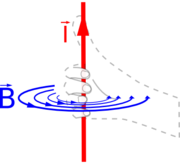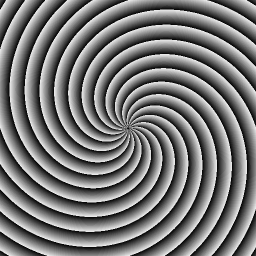I'm John Duffield, and a few weeks back I was talking to a guy who's a member of the ISST. I was looking something up and bumped into a discussion here about causality, FTL, and time travel, so I explained why time travel is science fiction. I then got sucked into backup details that rather hijacked the thread and took us into particle physics and the standard model. apologies. Now I've been challenged to present the geometry of the electromagnetic field. I expect this to lead on to the photon and the quantum of quantum mechanics, an explanation of how pair production works, and maybe the standard model with gravity.

I don't know if you all know, but Einstein won his Nobel prize primarily for his 1905 photoelectric paper "On a Heuristic Viewpoint Concerning the Production and Transformation of Light". This established the quantum nature of light. Another paper in this his "mirabalis" year was "On the Electrodynamics of Moving Bodies". This is electrodynamics and refers to Maxwell, but is considered to be Einstein's special relativity paper. Another important paper was "Does the Inertia of a Body Depend Upon Its Energy Content?" concerning mass and energy. This is where E=mc2 comes from. See http://en.wikipedia.org/wiki/Annus_Mirabilis_papers for more, but note it's all rather a mixed bag, and Einstein covered rather more than some appreciate. He’s mainly remember for gravity and The Foundation of the General Theory of Relativity (3.6Mbytes). IMHO people tend to forget that he was in on the ground floor of quantum mechanics in 1905, and still centre stage at the 1927 Solvay Conference:

This meeting discussed the Copenhagen Interpretation of quantum mechanics, and Einstein essentially lost the argument. After this he was still lauded by the media and public, but became somewhat detached from the scientific mainstream. Quantum mechanics morphed into quantum field theory, quantum electrodynamics, and so on, but Einstein didn’t play much of a part. Instead he became something of a trophy for Princeton, working largely alone trying to unify electromagnetism and gravity to come up with a unified field theory. He died trying.
The point of all this is that electromagnetism was very important to Einstein. He had pictures of Maxwell and Faraday on the wall of his study, along with Newton. When you read the original material you get a better idea of where Einstein was coming from. For example in Relativity: the Special and General Theory he said:
Most people don't appreciate the significance of this, and don’t go back to the original German which reads die Ausbreitungsgeschwindigkeit des Lichtes mit dem Orte variiert. Put it through google translate to find out what he really said. It isn't what the textbooks say he said, and if you understand impedance you know how important this is. It's the same for Maxwell. Read his original work and it's very different to the textbook version. "Maxwell's Equations" aren't Maxwell's equations, because Heaviside rewrote them in vector form. When you read Newton’s Opticks there’s more. That's when you start feeling skeptical about what you've been taught, and start doing your own research. You find out about Einstein and Cartan and torsion, about Einstein and Gödel and time, about Maxwell and Kelvin and vortices, and about physicists and papers you’ve never heard of before.
It takes you places, and along the way, it tells you about the electromagnetic field. See what you make of this:

I don't know if you all know, but Einstein won his Nobel prize primarily for his 1905 photoelectric paper "On a Heuristic Viewpoint Concerning the Production and Transformation of Light". This established the quantum nature of light. Another paper in this his "mirabalis" year was "On the Electrodynamics of Moving Bodies". This is electrodynamics and refers to Maxwell, but is considered to be Einstein's special relativity paper. Another important paper was "Does the Inertia of a Body Depend Upon Its Energy Content?" concerning mass and energy. This is where E=mc2 comes from. See http://en.wikipedia.org/wiki/Annus_Mirabilis_papers for more, but note it's all rather a mixed bag, and Einstein covered rather more than some appreciate. He’s mainly remember for gravity and The Foundation of the General Theory of Relativity (3.6Mbytes). IMHO people tend to forget that he was in on the ground floor of quantum mechanics in 1905, and still centre stage at the 1927 Solvay Conference:

This meeting discussed the Copenhagen Interpretation of quantum mechanics, and Einstein essentially lost the argument. After this he was still lauded by the media and public, but became somewhat detached from the scientific mainstream. Quantum mechanics morphed into quantum field theory, quantum electrodynamics, and so on, but Einstein didn’t play much of a part. Instead he became something of a trophy for Princeton, working largely alone trying to unify electromagnetism and gravity to come up with a unified field theory. He died trying.
The point of all this is that electromagnetism was very important to Einstein. He had pictures of Maxwell and Faraday on the wall of his study, along with Newton. When you read the original material you get a better idea of where Einstein was coming from. For example in Relativity: the Special and General Theory he said:
Einstein said:..according to the general theory of relativity, the law of the constancy of the velocity of light in vacuo, which constitutes one of the two fundamental assumptions in the special theory of relativity and to which we have already frequently referred, cannot claim any unlimited validity. A curvature of rays of light can only take place when the velocity of propagation of light varies with position."
Most people don't appreciate the significance of this, and don’t go back to the original German which reads die Ausbreitungsgeschwindigkeit des Lichtes mit dem Orte variiert. Put it through google translate to find out what he really said. It isn't what the textbooks say he said, and if you understand impedance you know how important this is. It's the same for Maxwell. Read his original work and it's very different to the textbook version. "Maxwell's Equations" aren't Maxwell's equations, because Heaviside rewrote them in vector form. When you read Newton’s Opticks there’s more. That's when you start feeling skeptical about what you've been taught, and start doing your own research. You find out about Einstein and Cartan and torsion, about Einstein and Gödel and time, about Maxwell and Kelvin and vortices, and about physicists and papers you’ve never heard of before.
It takes you places, and along the way, it tells you about the electromagnetic field. See what you make of this:









